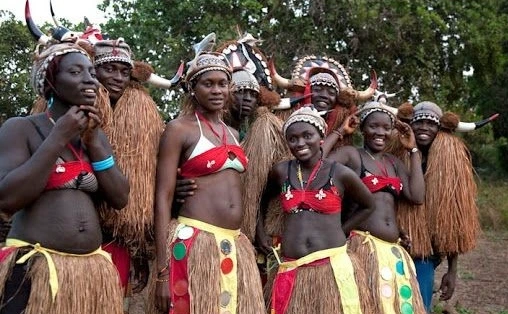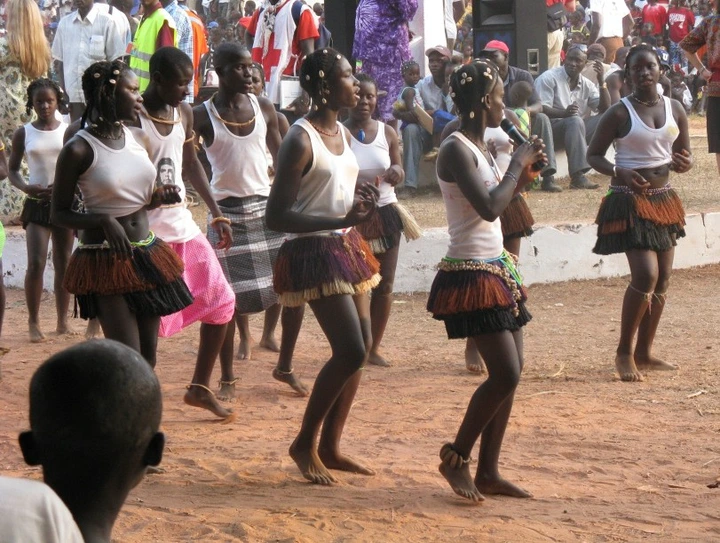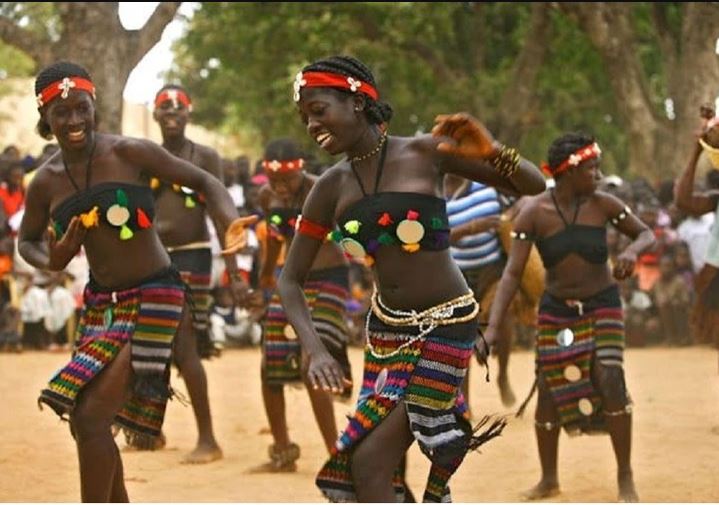In the Bijagos clan of Guinea, when a lady turns into a mother, she is given the most extreme regard and gets gigantic distinction. The introduction of a female in the Bijagos clan is particularly critical, considering that she would grow up to turn into a significant figure in the association of family and town life.
Situated in the Atlantic Ocean off the African coast, the Bijagos archipelago is comprised of twenty principle islands and a few more modest ones. Furthermore regardless of the long stretches of impact from Portuguese imperialism, ladies of the archipelago have the advantage in friendly government assistance, the economy, and the law.
 Before the times of Queen Pampa Kanyimpa who ensured the Bijagos islands against Portuguese success, European pioneers depicted the Bijago public or the Bissagos “as a marine group, savage and warlike, drenched in both the slave exchange and robbery,” a report by CBD-Habitat Foundation said.
Before the times of Queen Pampa Kanyimpa who ensured the Bijagos islands against Portuguese success, European pioneers depicted the Bijago public or the Bissagos “as a marine group, savage and warlike, drenched in both the slave exchange and robbery,” a report by CBD-Habitat Foundation said.
They crushed the Portuguese who needed to assume control over their territories during the 1530s until the last part of the 1900s when they were at long last colonized. Sovereign Kanyimpa, the most popular sovereigns of the Bijagos Islands, later finished up a nonaggression treaty with the Portuguese colonizers.
ALSO READ: Banna Tribe: A look at the extraordinary tribe where young men walk on stilts
Today, the archipelago is occupied by around 33,000 individuals living in a lavish, ripe, and rich regular habitat with influence in the possession of ladies.
 Comprising of little towns where houses are to a great extent made of mud and straw, ladies are the proprietors of these homes, and they even built them. An island in light of a resource economy, occupants own homesteads and develop vegetables, rice, and cashews, and ladies have monetary independence, coordinating work and surprisingly working more than men.
Comprising of little towns where houses are to a great extent made of mud and straw, ladies are the proprietors of these homes, and they even built them. An island in light of a resource economy, occupants own homesteads and develop vegetables, rice, and cashews, and ladies have monetary independence, coordinating work and surprisingly working more than men.
Despite the fact that men fish, gather sap and product of palm trees, and clean and consume the fields for the planting of rice, they are “at times treated as youngsters who are absolved from numerous obligations and permitted to appreciate more relaxation and joy time,” said an article in mmstudies.com.
For the most part, Bijago ladies are accountable for the housework; they develop little gardens and develop rice, process palm oil, slice straw to cover houses while teaching their youngsters and dealing with the town sanctuary.
ALSO READ: Why this tribe in Namibia do not bath with water
Aside from dealing with the economy and social prosperity, ladies likewise pick their spouses and conclude when they need a separation.
“The young ladies pick their spouses by setting an enormous plate of food at their preferred place. In the event that the young fellow will acknowledge her proposition, he eats the food. In the wake of doing as such, the future spouse goes to live with the young lady in the hovel which she will raise, and the couple is then hitched… until she hauls her significant other’s effects out the front entryway, accordingly demonstrating she doesn’t wish to live with him any longer,” the CBD-Habitat Foundation report said.
During functions, ladies are responsible for everything, from cooking, playing music, moving to serving beverages to the men. Having an animistic religion and having faith in rebirth, the vast majority of their functions accompany a great deal of ceremonies and supernatural quality, and ladies are responsible for relations with the soul world as the general public is driven by priestesses who are browsed maternal tribes.
The maternal factions are the most remarkable families among the Bijagos. Subsequently, the oroñô or head of a town on the island is likewise looked over these maternal groups in a movement that is controlled by a chamber of elderly folks.
In spite of relying upon the normal assets of the archipelago including its palm woods, mangrove swamps, shoals and oceanic zones, the Bijagos straightforwardly add to the conservation of the common habitat, prompting their region being proclaimed an UNESCO Biosphere Reserve in 1996.

 Latest5 days ago
Latest5 days ago
 Latest3 days ago
Latest3 days ago
 News2 days ago
News2 days ago
 Energy6 days ago
Energy6 days ago
 Latest4 days ago
Latest4 days ago
 Comments and Issues6 days ago
Comments and Issues6 days ago
 Business6 days ago
Business6 days ago
 Business6 days ago
Business6 days ago

